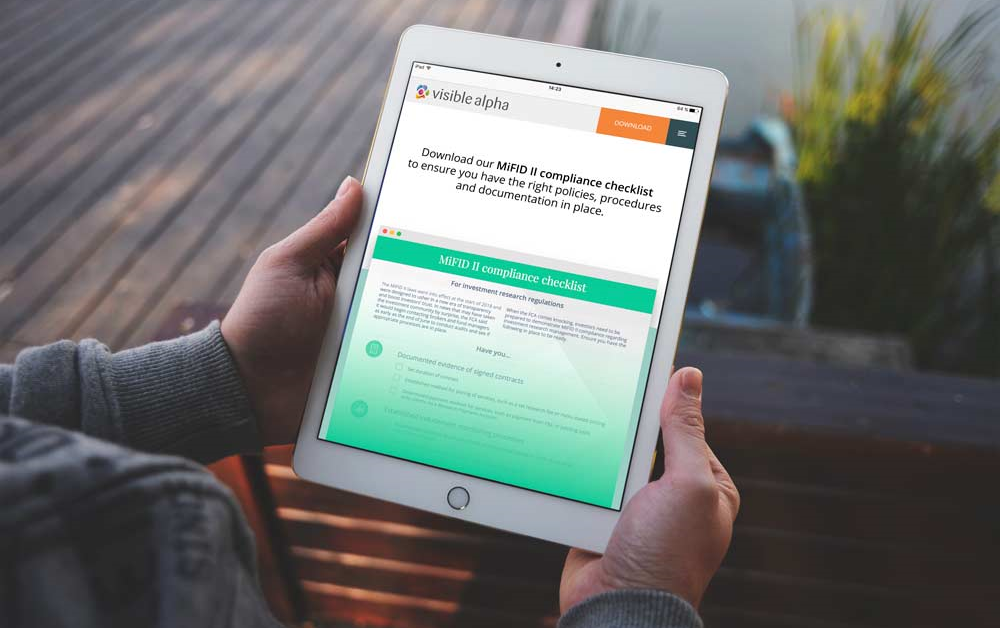As part of the MiFID II, buy-side firms impacted by the regulations are required to create and implement a research valuation framework to track, value and pay for consumed research. This has resulted in an increased focus on the quality of content consumed, including research reports, analyst models and corporate access events. While investment managers continue to rely on comprehensive usage and consumption data from providers as part of their valuation framework, it’s no longer simply about the quantity of research consumed. They are looking for new ways of consuming and evaluating the research they receive to bring a greater focus on the quality of that content.
According to a survey conducted by Visible Alpha in March 2018, 40% of asset managers reported that the greatest benefit from MiFID II has been a better understanding of the quality and fit of research providers for their firm.
MiFID II has forced investment managers all over the globe to take a closer look at their research provider relationships. While the full effects of the regulations are still being determined, it has been reported that some buy-side firms have already reduced the number of provider relationships. Firms are increasingly implementing a qualitative approach to research to ensure they are receiving the greatest value from those relationships, enforcing systems to receive input from the investment team on what research is most valuable to their investment process. Tracking tools, rate cards and provider evaluations offer a systematic and sustainable approach to determine value, particularly as buy-side firms are reevaluating their investment research budgets. In fact, the aforementioned survey illustrated that internal qualitative feedback had emerged as the most important input into the research valuation process.
So why a shift from a purely quantitative approach (or in some cases, no systematic approach at all) to one with a qualitative overlay?
Consider this consumer-focused phenomenon. Recently there has been increased mainstream press coverage on how social media companies have allegedly purposefully created addictive platforms. A former Mozilla and Jawbone employee, who designed the ‘infinite scroll,’ said that social media companies aim to make their platforms ‘maximally addicting.’ These companies have focused their development on getting users to log in more, to use the service more and to simply stare at it for longer. He goes on to explain that the goal was to increase the amount of time users spend on their apps for financial benefits: secure additional funding, increase stock prices, appeal to new advertisers.
Unfortunately, users find themselves spending more and more time using the service while having a less fulfilling experience overall.
In fact, in 2018 both Google and Apple released new tools on their respective operating systems to help users better understand and manage screen time and app usage. In addition, Facebook released new functionality to allow users to check daily usage times and set a pop-up alert when a self-imposed amount of time spent on the app is reached.
Why the sudden shift? Perhaps because these companies realized they were paying attention to the wrong metrics. They were measuring quantitative metrics, but they weren’t measuring quality.
This scenario parallels that of the evolving investment research paradigm. Spending more time reading reports, deconstructing analyst models or attending company meetings doesn’t always generate alpha. However, reading the right research, gaining new and interesting insights from models and talking to the right analysts at the right time is extremely valuable and can generate high-performing investment ideas.



